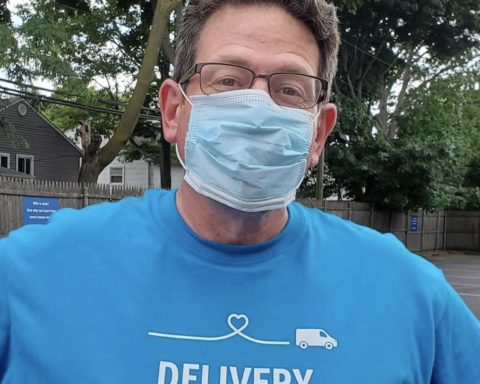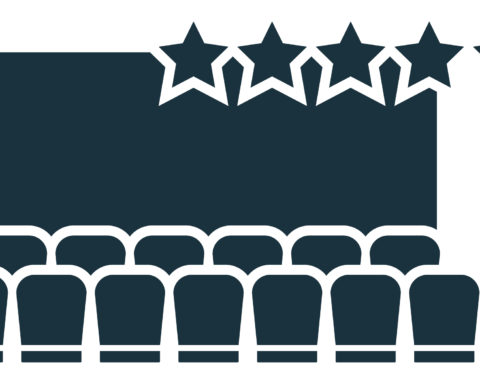BROOKLYN, NY—The first debate society was founded by Benjamin Franklin in 1727. He called it the Junto Club, where he and other colonial aristocrats would converge behind closed doors to read, argue over, and write pamphlets. This elitist and palpably privileged image of debate clubs intimidated me for a long time. When I imagined scholastic debate I envisioned preppy boys with names like Clarence and Maximilian, wearing tailored suits, arguing on the floor of the Oxford Union. I loved to argue with my friends, parents and anyone who was willing to put up with me, but for a long time I couldn’t see myself as a “debater.”
When I joined the Congressional Debate team at Bronx Science I quickly realized how dated my vision of elitist debate was. Practices weren’t scripted or rigid—they were entertaining and conversational. Instead of Clarence and Maximilian, my debate partners were Fatima and Abir. We would lean back in our chairs, eating food-truck bought burritos, and spar about the merits of a Universal Basic Income. It was a far cry from Franklin’s Junto Club, but the same spirit of dialect was unmistakably present. Initially, I saw debate as a great equalizer, allowing minority kids like myself to travel across the country to prestigious universities, giving us a stage to express our narratives. This idealism is what pushed me to throw my all into Congressional Debate and garner success in national final rounds. I’m grateful to my activity for providing me with invaluable public speaking and researching skills, while also allowing me to meet diverse and interesting people from across the country. However, after competing on the national debate circuit for two years, I realized that the competitive debate in its current form often fails to foster productive conversation around critical issues. Tone-deaf debate topics, compounded with a cutthroat competitive atmosphere rewarding manufactured empathy over a willingness to learn, is failing to prepare our students to face the social challenges of our time.
My school is one of a handful of public schools in the country that consistently demonstrates competitive success on the national debate stage—the best debaters usually come from private schools in Florida, Illinois or California with support from wealthy benefactors and large budgets. There are often stark racial disparities between teams as well, with white competitors often being the most well-resourced. Ideally, these differences should fall away during round. When a debate session starts we leave our individual contexts behind and impersonate members of the US Congress, representing a local district. Our chances of advancing to the next round hinge upon how well we can sell this role while maintaining coherent argumentation.
Most speeches follow a similar structure: a clever introduction, followed by a unique, logical claim defended with well-sourced research. Once Ethos and Logos are out of the way, debaters often rely on Pathos to clinch their position on the judges’ ballots. Emotional appeal is one of the primary ways through which a speaker can stand out in a round and Congressional Debaters are notoriously creative at impacting to invite empathy. We stand in a stuffy university room, flailing our legal pads, trying to pull at the judges’ heartstrings more than the person who spoke before us. Not only is it a strange sight, but also a potentially problematic one. The optics alone are troubling—when a suit-clad white boy begins preaching about how the legislation being debated “will ruin the lives of single mothers in inner-city communities,” you may wonder why he feels the need to reference struggles to which he has no relation. The answer: he’s expected to.
Congressional Debate was meant to draw together an array of diverse student voices to discuss a controversial piece of legislation. Often, these bills attempt to be topical and relevant but end up questioning basic rights. For example, a final round bill in the prestigious “Tournament of Champions” regarded the rights of transgender Americans to select their preferred gender on their passports. As student debaters, we have two options on a bill like this: either we argue to fail it and run the risk of extending a vaguely transphobic argument, or we argue to pass the bill and impact issues which we have no knowledge of nor authority over. Much like actual congress, our activity isn’t representative of our nation’s demographics, let alone its high schoolers. Transgender or inner-city students typically aren’t afforded the opportunities required to advance to the highest levels of student debate. In our socially charged political climate, Congressional Debate sometimes looks like a dark parody of what I hoped our activity would be. It isn’t the intellectual stomping-grounds of America’s socially conscious future leaders, rising to meet the challenges of our time. Instead, as the outside world grapples with police shootings and immigration laws, we posture behind closed doors, capitalizing on the narratives of the disenfranchised and underrepresented to gain points, after which we board our coach busses with trophies and medals in hand, leaving our advocacies behind.
But the problem is greater than socially insensitive rhetoric. The very structure of all high school debate events emulates a form of intellectual jousting, rather than an educational opportunity to engage with diverse perspectives. Philosopher Willard Van Orman Quine once said that debate emphasizes “the goal of persuasion over the goal of truth,” as competitors try to shoot down their opponent’s points and convince the judges that they’ve won at any means necessary. This stems from the fact that debaters are either assigned or predetermine their position on a topic; thus their role is simply to defend their claim at all costs, regardless of whether they believe in it. Students will often prescript refutations or evidence blocks against common opposing arguments, rather than interacting with them in real-time. When debaters do interact in round, they often cherry-pick a misplaced quote or small gap in reasoning, instead of truly engaging and weighing the merits of both sides. In a time where partisanship plagues American democracy, high school debate should teach students to reconcile ideological differences. Instead, debate trains students to listen to other’s viewpoints not to understand them, but to pinpoint their flaws and illustrate the superiority of their own thought.
For most debaters this is common knowledge. By senior year, many students are all too aware of the flaws within their respective debate activities. However, there is a general unwillingness to enact institutional reform within national debate leagues, partially because decades of precedent stand in the way—this is the way high school debate has always been. Despite this, I wasn’t ready to give up on debate yet; I’ve watched how the activity has allowed kids to find their voices, to become better researchers, thinkers and public speakers.
Writopia provided me with the opportunity to reimagine what debate would look like if kids had true freedom to decide their own sides, engage productively with each other’s arguments, and maintain civility and socially conscious rhetoric throughout. I’ve worked with Writopia to develop a new form of debate, borrowing elements from Congressional, Public Forum and other popular high school events. Our Writopia debaters spend the bulk of the time researching a topical issue, like police brutality, and instead of assigning them a “side” or “stance,” instructors work with each group to develop a unique approach to solving the crisis. This way, the program harnesses the students’ creative potential while also imparting valuable research and dialectal skills. In the final round, the groups debate each other’s solutions, where they are encouraged to weigh and compare each other’s proposals, rather than shoot them down with cherry-picked evidence or pre-determined refutations. If a student wishes to discuss the narrative of a minority group that they do not associate with, they are expected to make their argument through data and evidence, rather than facile and insensitive rhetoric. The whole debate is followed by a collaborative period, where all teams use the best parts of their respective proposals to draft a final, communal solution.
Most importantly, the debate structure is always subject to reform—our workshops adapt to meet challenges as they arise; our mistakes and flaws continue to inform change and self-reflection. If we want scholastic debate to remain an integral part of American culture, it needs to be as transient, fluid and diverse as our culture has grown to be.
Disclaimer: The opinions expressed here are solely my own and do not reflect the views of my school or team.







